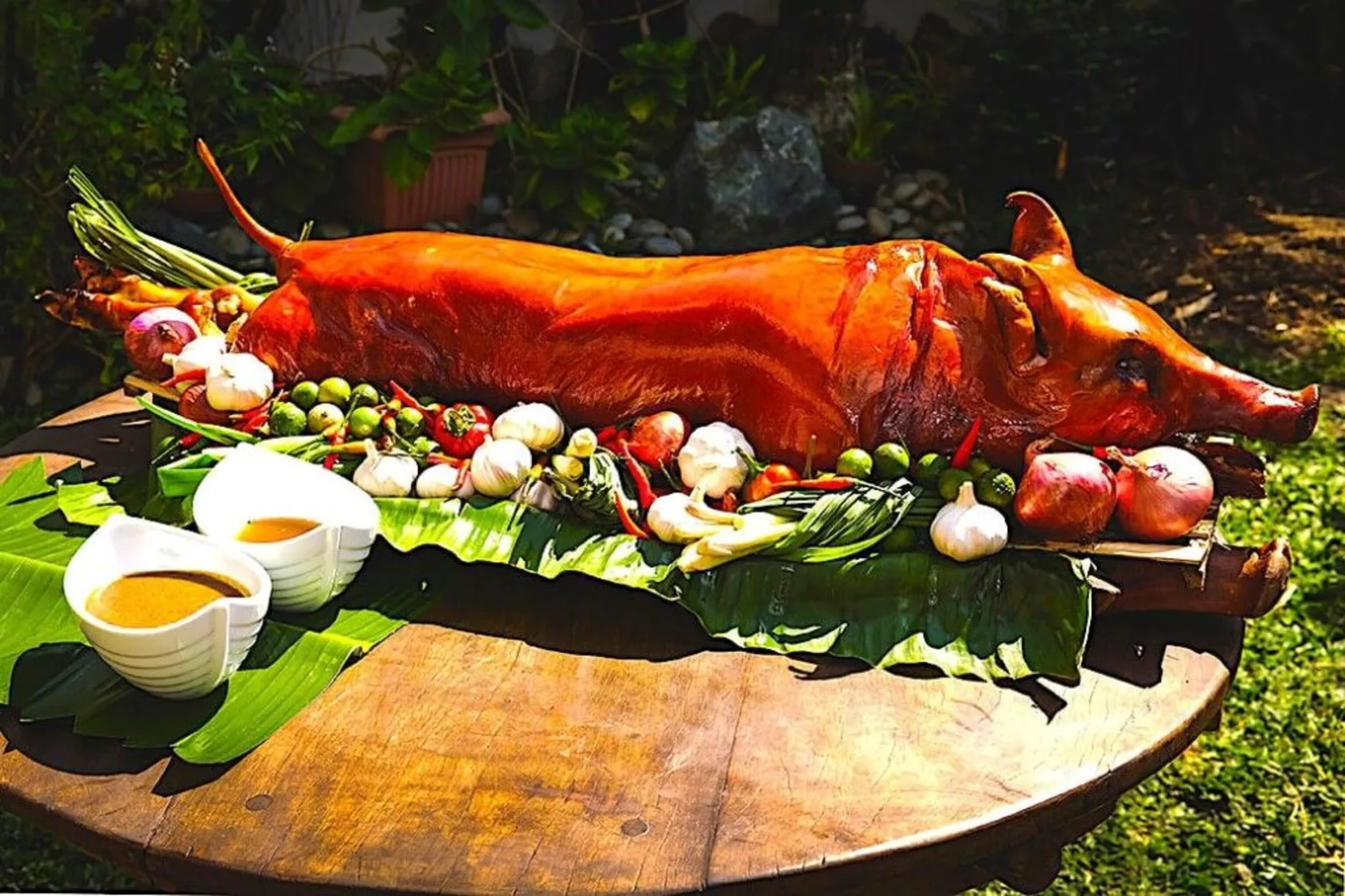
Lechon
A whole roasted pig, known for its crispy skin and tender meat, often served at celebrations.
Ingredients
- •Whole pig
- •Salt
- •Pepper
- •Garlic
- •Lemongrass
Instructions
Season
Season the pig with salt, pepper, garlic, and lemongrass.
Roast
Roast the pig over an open fire until skin is crispy.
Lechon is the crowning glory of Filipino celebrations, a whole roasted pig that's renowned for its impossibly crispy skin and succulent meat. This impressive dish is often the centerpiece at fiestas, Christmas gatherings, and other special occasions, drawing crowds who eagerly await their portion of the prized crispy skin.
The art of making lechon was introduced to the Philippines during the Spanish colonial period, but Filipinos have since perfected the technique, particularly in regions like Cebu, which is famous for its distinctive style of preparation. Cebu lechon is celebrated for its herb-stuffed cavity, which typically includes lemongrass, garlic, and various local spices that infuse the meat with incredible flavor.
The preparation of lechon is a labor of love that requires skill and patience. The process begins with thoroughly cleaning and preparing the pig, followed by careful seasoning both inside and out. The pig is then skewered on a bamboo pole and slowly roasted over charcoal for several hours, requiring constant turning to achieve that perfect, evenly-cooked result. The key to the famous crispy skin lies in basting the pig with coconut water or a mixture of milk and butter throughout the roasting process.
While traditional lechon is roasted whole, modern variations include lechon kawali (deep-fried pork belly) and boneless lechon, which are more practical for smaller gatherings. Some regions add their own twist to the seasoning - some use more garlic, others add tanglad (lemongrass), and some incorporate local herbs and spices.
In Filipino dining culture, lechon is typically served with a variety of accompaniments. The most common is liver sauce, a rich, savory sauce that complements the meat perfectly. In Cebu, however, they pride themselves on their lechon being so flavorful that it needs no sauce at all. The meat is often enjoyed with rice, and any leftovers are transformed into lechon paksiw, a dish where the meat is cooked in vinegar and spices.
While undeniably delicious, lechon is a dish that should be enjoyed in moderation. It's high in calories and saturated fat, particularly the skin and fattier portions. A 100-gram serving can contain upwards of 400 calories, with a significant portion coming from fat. For health-conscious diners, it's advisable to opt for leaner portions and balance the meal with vegetables. Despite its nutritional concerns, lechon remains a beloved dish that brings Filipino families and communities together in celebration.
